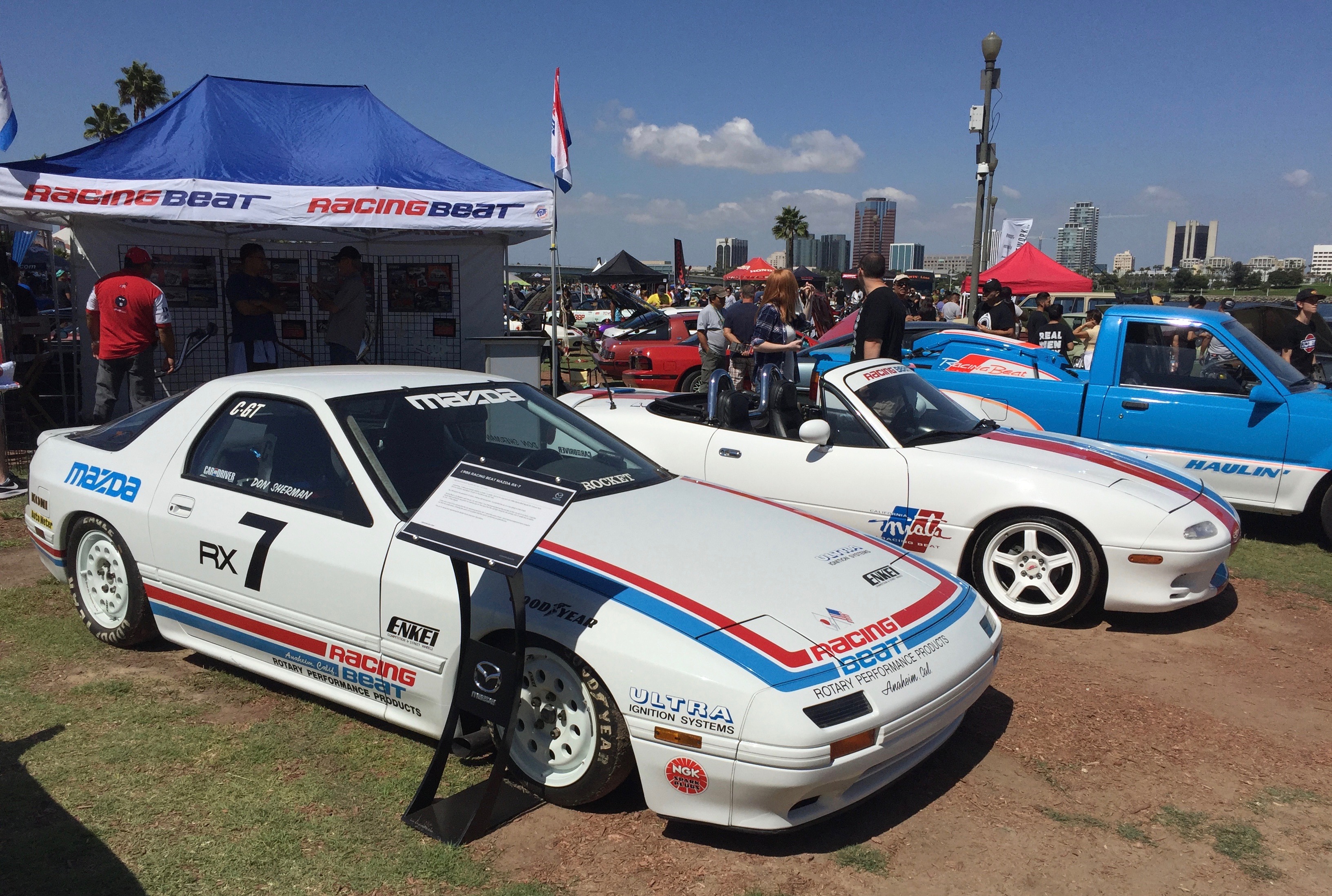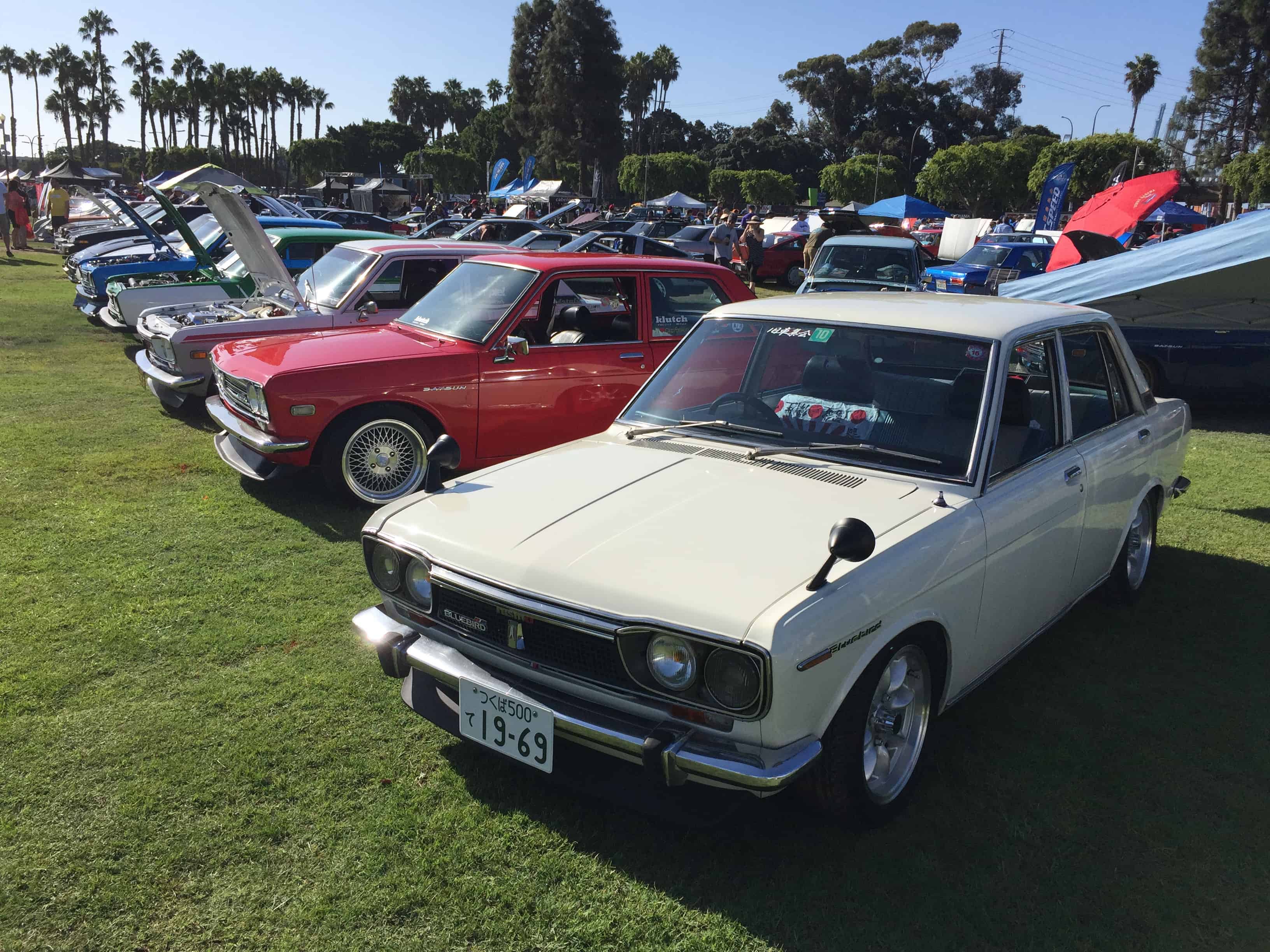Arigatōgozaimasu to the association that has diligently built this exhibition through countless challenges, not the least of which are getting the best-built cars to the field—and packing the gate.
Triskadekaphobia (fear of 13) be damned, the fans — and the knowledge base —packed the Queen Mary seaside park this year. The weather was bright and cool, moved inevitably to warm, but never reached hot. And your event entry with a hand stamp gave access to all the public spaces aboard the historic Queen — not to be missed.
This is not a “matching numbers” concours d’elegance. It is an exhibit of the cars many Los Angeles motorheads have grown up with, learned to admire — and modify. Think of the Japanese Classic Car Show as SEMA for 4-cylinder-turbocharged-intercooled-max-revs cars you can afford to love.
The Nissan Skyline in its various performance iterations is a fan favorite. The ’84 Skyline DR30 RS-X coupe (some turbocharged with intercooled intake) is one of the affordable super cars, rare in the U.S., that seem to require a “numbers matching” value guidance. They are easily modified for greater performance and are likely difficult to return to build-sheet authenticity.
The later GT-R versions now qualify for one of the 20 spaces set aside for Neo Classics manufactured between 1986 and 1995, but all of the GT-Rs, displayed with hoods open, maintain a crowd for most of the afternoon.
The most popular super-mod was any early lightweight Honda Civic with a twin-cam VTEC (Variable Valve Timing and Lift Electronic Control) engine, recognizable by its red cam covers (read: Honda Testa Rossa), some with a turbocharger packed tightly in the corner somewhere. Camber adjustable shock tower plates seem de rigueur across the field — in an effort to keep the lateral pull as hard as the longitudinal acceleration.
The early Datsun Z-cars were well represented, though original ones were rare. The Z Car Garage wins the OMG award with a black 240Z perfected to a breathtaking degree, yet masking an engine compartment with details of the fine art of tube-forming and fabrication.

Absolutely the favorite of your typer: Jim Mederer’s Racing Beat team brought the RX-7 that Car and Driver’s Don Sherman drove to 238.442 mph on the Bonneville salt in 1986, shattering the record by 37 mph.
It shared its star billing with a Racing Beat Miata and the company’s rotary-powered, turbo-boosted, intercooled pickup truck.
One outstanding disappointment was to see a couple of beautifully prepared Toyota Crown luxury sedans missing the cultural icons of the pure white crochet-lace doilies atop each of the four seats. They were ubiquitous in executive limousines on the streets of any city in Japan where the elegant Crowns were thick on the streets when they were new.
Road & Track reminded us the Datsun 510 was: “one of the most important cars of the 20th Century.” It was a small-scale BMW 1600 with its sohc engine and independent rear suspension — and it was infinitely tunable, remember Peter Brock’s BRE 510s that regularly embarrassed the best Alfa Romeos and BMWs in the under-2.5-liter Trans-Am championship.
Now the beautiful Michelotti-inspired Italianate sedans in good condition are rare and the 510 wagon has taken its place as the object of desire.
At the JCCS there were lots of these sedans, but virtually all were the “Bluebird” badged Japan-only editions. The body is the same, but a more complex grille and headlight arrangement, and if it’s an authentic import, right hand drive are clear identifiers.
The Japanese Classic Car Show is worthy of your day if you love to enjoy the enthusiasm of motorheads. As many as 80 percent of the cars on the field had been modified and the quality of craftsmanship is equal to any in the great galaxy of hot rodding. That alone is worth the trip to Long Beach in 2018.
Gallery photos by Larry Crane





